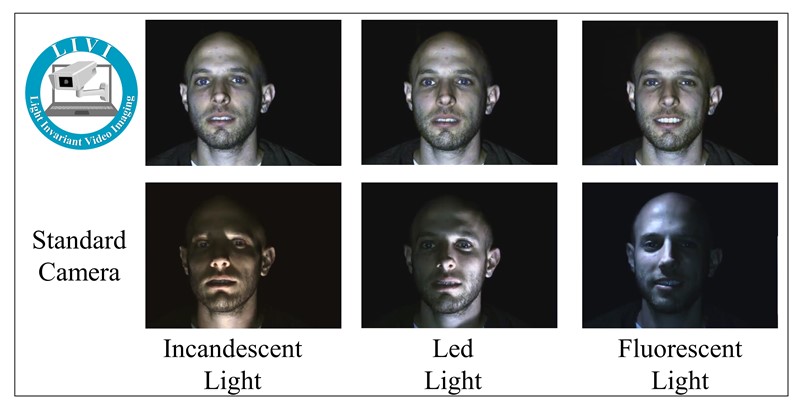
BGN Technologies, the technology transfer company of Ben-Gurion University, announced today that researchers at Ben-Gurion University of the Negev (BGU) have developed a new Light Invariant Video Imaging (LIVI) software technology that can significantly improve picture clarity of cameras in sub-optimal lighting, thus enhancing object recognition. The new software app can be added to any existing smart camera system for various applications, including facial recognition for security use, as well as augmented reality.
LIVI increases the functionality of cameras by eliminating the effects of background or dynamic lighting conditions, thereby delivering shadow-free images with constant color output and improved contrast. The software relies on amplitude-modulated (AM) light separation, similar, in principle, to AM radio communication. This enables cameras to separate the influence of a modulated light from unwanted light sources in the scene, causing the AM video camera frame to appear the same, independent of the light conditions in which it was taken.
“Strong background light creates shadows, for example when people walk into buildings, interfering with the ability of our eyes and cameras to recognize faces," said Prof. Hugo Guterman, from the Department of Electrical and Computer Engineering, and head of the BGU Laboratory of Autonomous Robotics. “Our invention produces a 'flash' effect that clears the backlight, removes shadows and improves contrast, making all captured frames much clearer," says Prof. Guterman. “This can have numerous applications, from smart security cameras through cell phone or computer face recognition apps, augmented reality and video game applications and military use."
Amir Kolaman, a Ph.D. student at the Department of Electrical and Computer Engineering, was working on his thesis on underwater photography when the issue of backlight arose. Together with Prof. Guterman they developed the system that filters out the backlight for each pixel in the image, much the same way that a radio receiver filters one station from another. “Light intensity can be modulated at different frequencies just like in radio waves," says Kolaman. "We turn each camera pixel into an AM receiver that tunes to the flash light and filters out the background lights from the output frames."
According to Netta Cohen, CEO of BGN Technologies, “this is a perfect example of a technology developed at BGU labs that addresses real market needs. This new technology is inexpensive to produce and can be easily incorporated into various devices." BGN Technologies is now seeking a partner for the further development and commercialization of this breakthrough technology.
The video analytics market is most likely the first market in which the technology will be integrated, since robust camera frames improve performance of facial recognition and identification. The global video analytics market is projected to reach $11.17 billion by 2022 according to a Markets and Markets report published in April 2017.
The recreational smartphone market represents another major opportunity, as more smartphones come equipped with facial recognition security. The worldwide smartphone market reached approximately 1.53 billion units in 2017, according to an IDC report published in March 2017.
Media Coverage
Sensors Online
